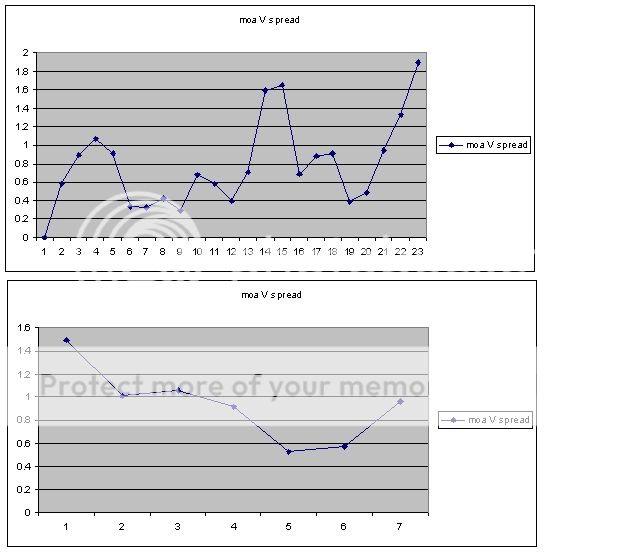[ QUOTE ]
I didn't say it wasn't harmonics - never said that!!
[/ QUOTE ]
OK, you said it was vibration. Functionally equivalent for a discussion like this.
[ QUOTE ]
Any math major can give you the math laws that define this, so this is NOT my theory or opinion... a mathematician would wet his pants laughing at the "Ladder theory". The sample pool is just not large enough to give you accurate information to draw from.
[/ QUOTE ]
Funny you should mention that, as I have a degree in Applied Mathematics and Computer Science. A Ladder test is not a single data point. It is a series of experiments that give data points across the range of its independent variable (powder charge).
If I run a ladder test and vary the loads by .3 grains, its no different than if I run the test and vary them by .1 grains or maybe .005 grains. When I run a ladder test, I'm not looking 'INITIALLY' for the best load. I am looking for an area to use for 'FURTHER' investigation. I believe a ladder test is an excellent process for THAT! With the fewest number of shots.
That further investigation may be a more granular ladder test of .1gr increments to verify the original test and put a little finer point on my understanding of the results.
Note the following chart. The first chart is the Vertical spread for an entire Ladder test for a 7mm Rem Mag using RL-22 powder. I had borrowed a 1/2 lb to see how it shot. I liked the node around shot #19. So I purchased 10lbs of RL-22 and decided before I really honed in on a load, I'd rerun that portion of the test to eliminate lot to lot variation with the powder. I loaded (using the new lot of powder) loads 15-21. The second chart are those loads.
You might notice that the general shape of the 2 tests are very similar (not EXACT). But the SAME node can clearly be seen between the 2 tests. The y axis is the 3 shot total vertical spread in MOA from the point of aim. The load I chose was actually .1gr higher than load #19/#5.
Verifying the load with groups, they have all been under .5MOA (3 shot groups), not bad for a rifle that weighs less than 8 pounds. I found this load with a powder I had NEVER used before in a total of 36 shots (including 3 foulers before each test). I then verified with 3 3shot groups at my chosen load, so a total of 45 shots and I have a load that is 3000fps, 162gr bullet typical group size of .4MOA at 200yds.
[ QUOTE ]
And all that assumes an accurate barrel... factory barrels can be so poor that they just can't shoot small or predictable groups, so with ladder theory, you can chase your tail for weeks and never find anything.
.
[/ QUOTE ]
Well, the above ladders were shot with a factory 24" Remington barrel in a 700 action. I've bedded the action in a Brown precision Kevlar/foam stock and swapped in a Timney trigger, but the barrel/chamber are factory.
Oh, this rifle isn't much different accuracy wise from any of my other Model 700's. Maybe I am just REALLY lucky???
Later,
Don

